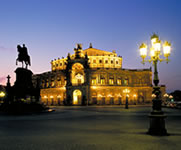The mysterious world below ground
Without Rammelsberg mountain and its ores and without mining, Goslar would probably never have become the seat of the German emperors, or an important Hanseatic trading town. The ore deposits were primarily of silver, lead, zinc and copper. The mines yielded almost 30 million tonnes of ore, making Rammelsberg one of the most productive deposits in the world. Finally exhausted in 1988, the mines of Rammelsberg were in continuous operation for more than 1,000 years, an unparalleled feat. The size of the museum itself reflects the vast area that was mined – the museum site covers 20,000m˛ and is one of the biggest in Germany.



